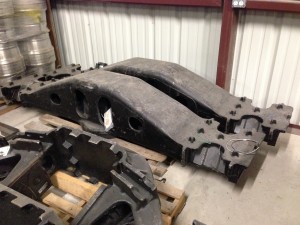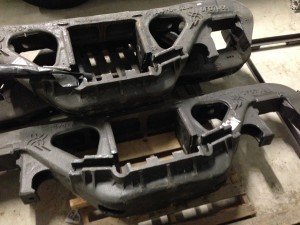Side frames and bolsters were being refurbished manually, which consisted of manually welding all of the bearing surfaces and then manually grinding the profiles of these surfaces. Once the grinding was completed , the employee would use a GO / NO GO gauge for final inspection.
This was a slow, laborious, and costly way to refurbish these products.
The driving costs for automation were obviously the increased productivity and labor savings, but in the end, it was the fine costs that eclipsed all other savings.
The manual refurbishment caused the centerline distances to change, resulting in the wheels hunting while going to the tracks. As the government has sensors on tracks across the country, train cars that travel the tracks in this condition trigger the sensors to then take a picture of the car and in turn issues a fine. The Vector solution eliminates this condition completely.
The Vector Automation solution starts by using a laser to laser scan of the part to be refurbished and then comparing that information to a CAD model of an as cast part. This information is then sent to the two robots in the refurbishment cell. One robot is a welding robot and one for robotic machining.
Based upon the initial laser scan, the welding robot will weld the part in certain areas that require rebuild. Once the welding operation has been completed, the machining robot will machine those bearing surfaces back to as cast dimensions.
The end result was lower labor costs, faster turn-around times, and the elimination of government imposed fines due to wheel hunting while on the tracks.


